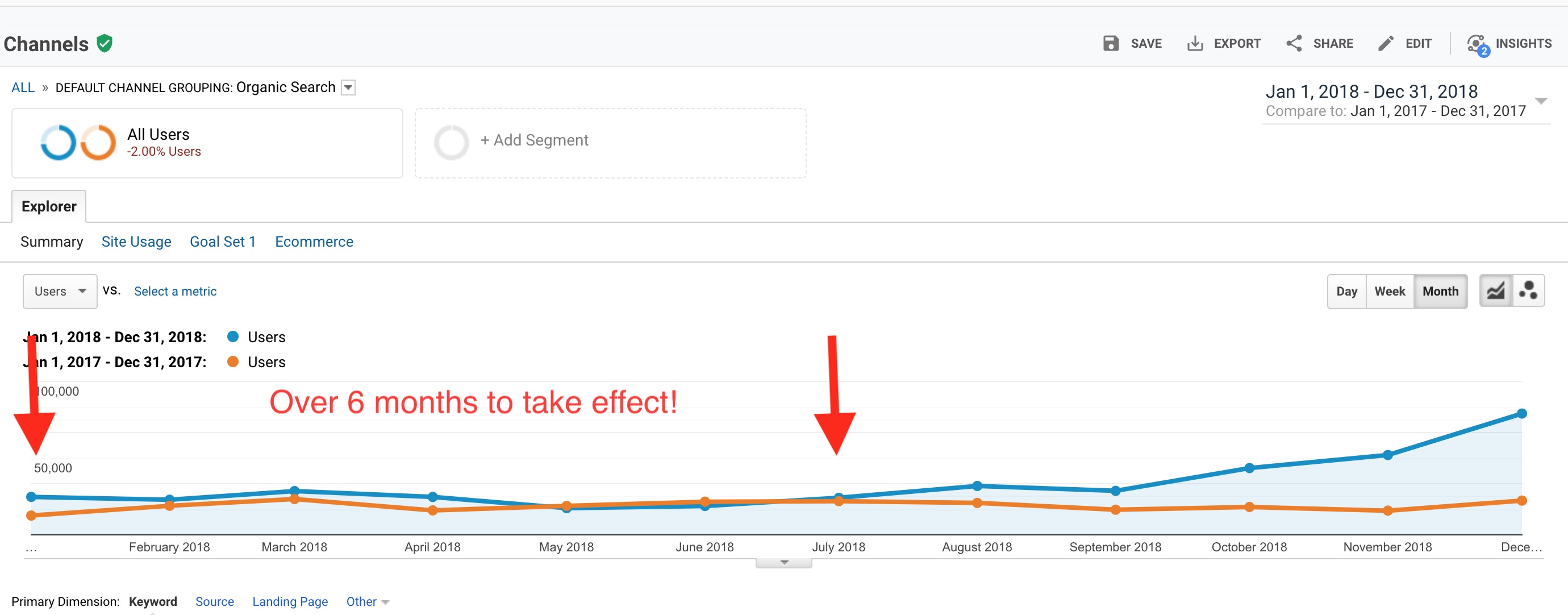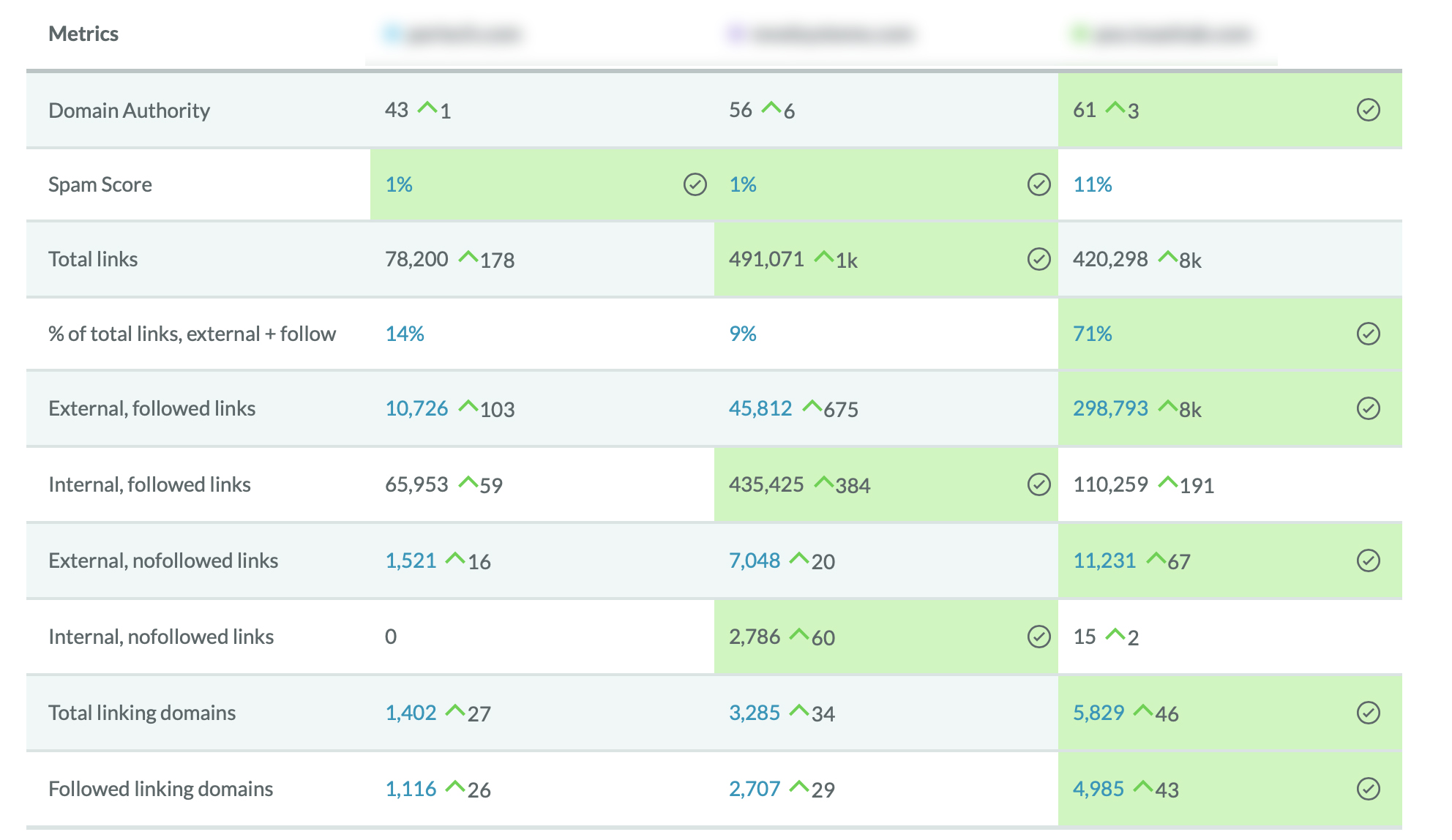23 Jul How to Calculate the ROI of Link Building via @_kevinrowe
Unlike your other digital marketing efforts, link building doesn’t seem to create immediate value.
You can calculate the ROI, positive or negative, on a sale from your marketing channels, but calculating the value of building links seems murkier.
In a survey last year, less than 50% of small businesses had an SEO budget at all, and a plurality of those businesses spent less than $100 per month.
Given the extraordinarily low amount most businesses and marketers spend, you can believe their expectations would be for a trackable ROI.
In fact, I believe you actually can measure the ROI of link building pretty specifically. These ROI calculations fall into two categories:
- Short-term.
- Long-term.
Understanding the short-term calls for already being able to calculate the value of sales or conversion on your website.
In both cases, you must have the correct metrics and conversions set up in Google Analytics and have a solid understanding of it, as well as some other commonly used SEO tools.
If you can’t measure the ROI of your other marketing efforts, then measuring the ROI of just link building will be futile.
Methods to Calculate ROI: Short-Term
A good understanding of your ROI from link building actually takes some time to develop. This should be measured over the course of months – leading up to a year or more – rather than a few weeks.
However, we all know that marketers can be evaluated on a much more short-term basis. There are some admittedly limited metrics for calculating your short-term ROI.
A good place to start for talking about short-term ROI centers on how you’ve gone about link building. My short-term strategy is to generate one piece of content on the website and then drive links to that.
The expectation is that this piece of content gets traffic right away.


Take a look at the screenshot above. We commenced link building for this client at the beginning of 2018.
We ended up increasing organic traffic over 76% year over year, but noticeable effects didn’t start accruing until 7 months into the year.
While there was a short-term bump in traffic right as we started, the client didn’t start seeing a large ROI until well into the campaign.
Using tools like SEMrush and Ahrefs, you’ll look at organic rankings and search traffic specifically.
Comparing organic rankings and traffic both before and after your content piece’s publication – generally around a 90-day window, if possible – offers a snapshot of the return on your link building effort.
The clickthrough rates for organic search rank positions is a real thing.
Going from unranked or low-ranked to the third position is a 0-ish to 10% increase.
Going from third to first is a 10% to 30% increase in absolute clickthrough rate.
Of course, total search volume for keywords is misleading, so make sure you research search intent as well.
With the real search volume in hand, ranking increases can be tied to a tangible ROI.
To nail down the actual ROI of traffic in dollar amounts can be trickier, but if you or your client is able to measure this for other channels, then doing so for link building shouldn’t be out of reach.
For this to work you must have Google Analytics and conversions set up correctly, otherwise, you won’t be able to put a concrete figure on how much value an increase in organic traffic will bring you.
Ghost Marketing also has a good case study on how to calculate ROI for link building.
If you’re working with an ecommerce site and have integrated your Google Analytics with their backend platform – easily done with the top platforms like Shopify, Magento, and BigCommerce – then it’s just a matter of going to the Acquisitions > Channels within Google Analytics.
Then, you can see the breakdown of channels (with organic being the relevant one here) and their revenue potential.
At this point, you can either:
- Segment the organic traffic from the previous X months and compare it to the future Y months after your link building efforts (like in the example above).
- Or, you can go more in-depth and calculate the value of a session.
Take a date range of 6 months or more and divide the total organic revenue by the organic sessions. This will give you an actual dollar value for each session.
| Ecommerce Sessions (last 6 months) | 550,000 |
| Ecommerce Revenue (last 6 months) | $50,000 |
| Value per Session | $0.09 |
| Ecommerce Sessions Increase (next six months) | 27% |
| ROI of Link Building | $13.50 |
Here’s an example above for a client we recently undertook a link building campaign. (All traffic figures are organic.)
They started with a baseline of 550,000 sessions and each session was valued around $0.09. We were able to boost their ecommerce sessions 27%, netting a modest immediate ROI.
This article on budgeting for SEO, though, puts this figure into perspective. In the short-term, your ROI may be quite small or even negative.
It’s only when you start considering the lifetime value of your customers and other longterm effects does the true value of link building start to show.
Methods to Calculate ROI: Long-Term
Over the long-term, from six months to several years, putting a specific dollar amount or ROI on link building becomes much harder even as it increases dramatically.
Also, moving the needle takes many times more effort to improve when you’re already at or near the top instead of starting from zero.
At this point, the best way to evaluate link building ROI is a metric like Domain Authority (DA).
Moz’s Domain Authority is “a search engine ranking score developed by Moz that predicts how well a website will rank on search engine result pages.” It’s based on a scale of 0 to 100 with 100 being the highest rank.
There are two three important things to note about DA.
The very first is that it’s recently undergone some changes so be sure to study up.
Second, DA is logarithmic, meaning it’s exponentially easier to move up from 10 to 20 than 80 to 90. It literally takes orders of magnitude more effort, 10x more effort, to keep increasing your DA.
Finally, be aware that DA is a comparative metric rather than absolute. That is, your goal isn’t necessarily to just raise your DA to 100.
Sites like Facebook, YouTube, and Wikipedia have very top DA because they have millions of links in and out.
Rather, you need to research your competitors for traffic or ranking and evaluate your DA versus their sites and pages.


In the example above, our client is on the left. Even though we’re increasing their DA, our tracked competitor sites are also increasing DA. Also note, a 43 DA is generally good but on this particular space there’s still room to grow.
Over the long-term, you can increase your DA by driving many high-quality links to your website across many places. This both takes time to accomplish and to register for DA, but it’s well worth the effort.
Increasing the DA makes each new content piece perform better than if your DA were lower. That is, it gives a multiplicative effect for all of your ongoing efforts.
Another long-term way to evaluate your link building ROI is using Google Search Console to look at impressions.
Often, digital marketers will focus solely on clicks, pageviews, and sessions, but this is a mistake. Long-term growth for a website should be looked at as holistically as possible.
This breakdown by Glenn Gabe helps clarify all the different ways Google Search Console registers an impression – there are many, and often an impression does not mean a user actually “saw” your website.
Nonetheless, impressions shouldn’t be discounted on a long-term basis. Optimizing for impressions and visibility on the SERP is also important for an increasingly “zero-click” future.
More Resources:
- Successful Link Building Requires More Than Links
- How to Build Links This Year
- Link Building: How to Acquire & Earn Links That Boost Your SEO
Image Credits
Featured Image: Unsplash
Screenshots taken by author, June 2019
Sorry, the comment form is closed at this time.